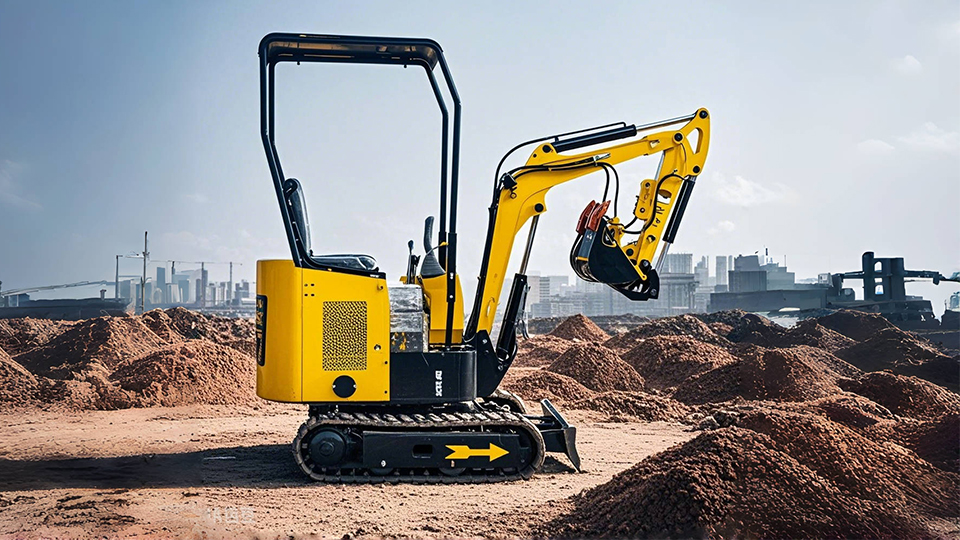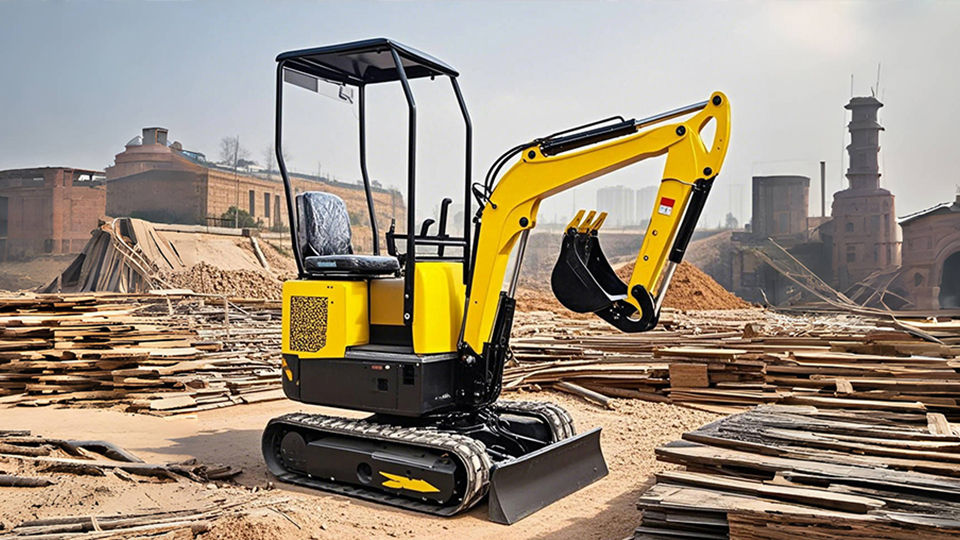I. Introduction A. The Increasing Demand for Efficiency in Modern Construction
B. The Pivotal Role of Small Excavators in Diverse Applications
C. Thesis Statement: Modern innovations in small excavators are significantly boosting performance, leading to unprecedented levels of efficiency in operation, fuel consumption, and overall project delivery.
II. Defining Efficiency in Small Excavator OperationsA. Beyond "Fuel Economy": A Multifaceted Concept
B. Key Efficiency Metrics:
1. Productivity (Cubic Yards/Hour, Tasks Completed/Day)
2. Fuel Consumption (Gallons/Hour, Fuel Burn per Task)
3. Downtime Reduction (Maintenance, Breakdowns)
4. Operator Fatigue and Comfort
5. Precision and Rework Reduction
III. Advancements in Core Systems for Enhanced EfficiencyA. Hydraulic System Innovations:
1. Load-Sensing Hydraulics: How variable displacement pumps match power to demand, reducing wasted energy.
2. Proportional Control Valves: Enabling finer, more precise movement for attachments, minimizing overshoots and rework.
3. Flow Sharing and Regeneration: Optimizing simultaneous movements (e.g., boom, arm, bucket) for smoother, faster cycles.
4. Electronic Over Hydraulic (EOH) Systems: Precise digital control, customizable operator settings, and improved diagnostics.
B. Engine and Power Management Optimization:
1. Tier 4 Final/Stage V Engines: Emissions compliance driving cleaner combustion and more efficient power delivery (turbocharging, common rail fuel systems).
2. Auto-Idle and Auto-Shutdown Systems: Automatically reducing engine speed or shutting down during inactivity to save fuel and reduce wear.
3. Multiple Work Modes (Eco, Power, Fine): Allowing operators to select the optimal power setting for the specific task, balancing power with fuel economy.
4. Engine Control Units (ECUs): Advanced algorithms managing fuel injection, air intake, and power output for peak efficiency.

C. Structural and Material Innovations:
1. Optimized Boom and Arm Geometry: Enhancing reach, digging force, and stability for more efficient material handling.
2. Reinforced Undercarriage and Counterweights: Improving stability and lift capacity, allowing for more productive use of attachments.
3. Use of High-Strength, Lightweight Materials: Reducing overall machine weight where possible without sacrificing durability, improving transport efficiency and maneuverability.
IV. Smart Technologies Boosting Operational Performance and EfficiencyA. Telematics and Connectivity:
1. Real-time Data Collection: Fuel consumption, engine hours, idle time, fault codes.
2. Predictive Maintenance and Diagnostics: Reducing unexpected downtime and optimizing service schedules.
3. Geofencing and Asset Tracking: Preventing unauthorized use, optimizing logistics.
4. Operator Performance Monitoring: Identifying training needs and best practices.
B. Grade Control and Machine Guidance Systems (2D & 3D):
1. Increased Accuracy: Eliminating over-digging and under-digging, reducing material waste and rework.
2. Faster Completion Times: Operators can work more quickly and confidently to target grades.
3. Reduced Surveying Costs: Less need for constant staking and manual checks.
4. Integration with GNSS/GPS: Real-time positioning for complex contours and site plans.
C. Advanced Attachment Control and Versatility:
1. Hydraulic Quick Couplers: Minimizing changeover time between tasks.
2. Tiltrotators: Revolutionizing excavation by allowing multi-axis movement of attachments, reducing machine repositioning and increasing precision.
3. Smart Attachments: Attachments with integrated sensors or controls that communicate with the machine.
V. Operator-Centric Innovations for Human Efficiency (approx. 250 words)
A. Ergonomics and Comfort:
1. Reduced Operator Fatigue: Improved seating, HVAC, noise reduction, intuitive controls.
2. Enhanced Visibility: Improved cab design, cameras (rearview, side view).
B. Intuitive Controls and User Interfaces:
1. Customizable Joystick Settings: Tailoring controls to operator preference and task.
2. Large, High-Resolution Displays: Providing clear operational data and machine status.
3. Easier Access for Daily Checks and Maintenance.
VI. The Future of Small Excavator Efficiency: Electrification and Automation
A. Battery-Electric Models: Zero emissions, significantly reduced noise, lower operating costs (fuel savings).
B. Hybrid Electric Systems: Combining diesel power with electric assist for peak efficiency.
C. Remote Operation and Semi-Autonomous Functions: Enhancing safety in hazardous environments, optimizing repetitive tasks.
VII. Conclusion
A. Summary of How Innovations Drive Efficiency
B. The Economic and Environmental Benefits for Contractors
C. Outlook: Continued evolution towards smarter, more productive, and sustainable small excavators.
Detailed Introductory Section:
Small Excavator Efficiency: How Modern Innovations Boost Performance
In the dynamic and competitive world of construction, efficiency is no longer merely a desirable trait; it has become an absolute imperative for profitability and sustainability. Every minute of downtime, every wasted gallon of fuel, and every instance of rework directly impacts a project's bottom line. Within this landscape, small excavators have emerged as indispensable workhorses, integral to everything from landscaping and utility trenching to urban development and precision grading. Traditionally valued for their maneuverability and compact footprint, these machines are now undergoing a profound transformation, driven by a wave of modern innovations that are dramatically boosting their performance and, consequently, their overall efficiency.
The concept of efficiency in small excavators extends far beyond simple fuel consumption. It encompasses a multifaceted array of factors including raw productivity—how much material can be moved or how many tasks can be completed in a given timeframe—as well as the reduction of operational costs, minimization of environmental impact, and enhancement of operator effectiveness. Modern advancements are addressing each of these dimensions, propelling small excavators into a new era of capability.

This article will delve into the cutting-edge technologies and design philosophies that are redefining efficiency in the compact excavator segment. We will explore how sophisticated hydraulic systems now intelligently manage power, how advanced engine controls optimize fuel burn, and how integrated telematics provide invaluable data for smarter fleet management. Furthermore, we will examine the impact of machine guidance systems that eliminate guesswork, the transformative versatility offered by advanced attachments, and the critical role of operator comfort and intuitive controls in maximizing human-machine synergy.
Ultimately, these innovations are not just incremental improvements; they represent a fundamental shift in how small excavators operate, perform, and contribute to project success. By leveraging these advancements, contractors and operators can achieve unprecedented levels of precision, speed, and cost-effectiveness, ensuring that every hour on the job site is maximally productive. This deep dive will illustrate how modern small excavators are setting new benchmarks for performance, proving that when it comes to efficiency, size is no longer a limitation, but rather a catalyst for innovative engineering.
Post time:Sep-25-2020
